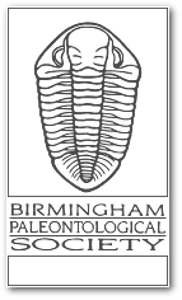Fossils
'Paleo-robots' to help scientists understand how fish started to walk on land
The transition from water to land is one of the most significant events in the history of life on Earth. Now, a team of roboticists, palaeontologists and biologists is using robots to study how the ancestors of modern land animals transitioned from swimming to walking, about 390 million years ago.
Categories: Fossils
Paleontologists discover Colorado 'swamp dweller' that lived alongside dinosaurs
The new mammal lived in Colorado 70 to 75 million years ago -- a time when a vast inland sea covered large portions of the state, and animals like sharks, turtles and giant crocodiles abounded.
Categories: Fossils
Paleontologists discover Colorado 'swamp dweller' that lived alongside dinosaurs
The new mammal lived in Colorado 70 to 75 million years ago -- a time when a vast inland sea covered large portions of the state, and animals like sharks, turtles and giant crocodiles abounded.
Categories: Fossils
Paleontologists discover Colorado 'swamp dweller' that lived alongside dinosaurs
The new mammal lived in Colorado 70 to 75 million years ago -- a time when a vast inland sea covered large portions of the state, and animals like sharks, turtles and giant crocodiles abounded.
Categories: Fossils
Why a potted plant isn't the easiest option for would-be gardeners
For nervous newbie gardeners, starting out with a single plant in a small pot is pitched as an easy win by the horticultural industry. James Wong explains why it isn't
Categories: Fossils
New Scientist recommends documentary Hunt for the Oldest DNA
The books, TV, games and more that New Scientist staff have enjoyed this week
Categories: Fossils
Symbiosis in ancient Corals
A research team has used nitrogen isotope analysis to demonstrate that 385 million years old corals from the Eifel and Sauerland regions had symbionts. This finding represents the earliest evidence of photosymbiosis in corals. Photosymbiosis might explain why ancient coral reefs grew to massive sizes despite being in nutrient-poor environments.
Categories: Fossils
Symbiosis in ancient Corals
A research team has used nitrogen isotope analysis to demonstrate that 385 million years old corals from the Eifel and Sauerland regions had symbionts. This finding represents the earliest evidence of photosymbiosis in corals. Photosymbiosis might explain why ancient coral reefs grew to massive sizes despite being in nutrient-poor environments.
Categories: Fossils
'Drowning continent': Western Australian coastline's complex history
A study investigating the complex evolution of two iconic Western Australian landmarks, has traced their transformation over thousands of years and offers a glimpse into their future. Researchers collected sedimentary samples from multiple locations along Perth's coastline, waterways and even the sea floor to track changes which occurred as the ocean levels rose dozens of meters over thousands of years.
Categories: Fossils
Morphing red blood cells help bats hibernate - and we could do it too
Animals that hibernate need a way to keep their blood flowing as their body temperature drops, and it seems that the mechanical properties of red blood cells may be key
Categories: Fossils
What happened when a meteorite the size of four Mount Everests hit Earth?
Scientists paint a compelling picture of what happened the day the S2 meteorite crashed into Earth 3.26 billion years ago.
Categories: Fossils
Hornets can hold their alcohol like no other animal on Earth
The oriental hornet shows no ill effects – or behavioural changes – when it spends a week drinking an 80 per cent alcohol solution
Categories: Fossils
Preserved tracks suggest non-avian dinosaurs used their wings to run
Not all winged dinosaurs were necessarily capable of full flight, but this anatomical feature may have enabled them to travel further by flapping or gliding
Categories: Fossils
Rare fossils of extinct elephant document the earliest known instance of butchery in India
Scientists have discovered the earliest evidence of animal butchery by humans in India.
Categories: Fossils
Rare fossils of extinct elephant document the earliest known instance of butchery in India
Scientists have discovered the earliest evidence of animal butchery by humans in India.
Categories: Fossils
Ancient viral DNA in the human genome linked to multiple sclerosis and amyotrophic lateral sclerosis
New research has revealed a connection between ancient viral DNA embedded in the human genome and the genetic risk for two major diseases that affect the central nervous system.
Categories: Fossils
These stunning photos celebrate the intricacy of the microscopic world
A mouse's tumours, scales from a butterfly's wings and a smiling cross-section of a bracken fern are some of the incredible images from the Nikon Small World photography competition
Categories: Fossils
Motor made from bacteria parts is one of the smallest ever built
The natural motors that power tail-like appendages in bacteria seem to have a single evolutionary origin, allowing parts from different species to be combined to create a tiny new engine
Categories: Fossils
De-extinction company claims it has nearly complete thylacine genome
Colossal, a US firm that is aiming to revive lost species such as the woolly mammoth, says it now has a near-complete genome of the extinct thylacine
Categories: Fossils
Dolphins breathe in microplastics and it could be damaging their lungs
Dolphins in the Gulf of Mexico have tiny bits of plastic in their breath, and this is probably a worldwide problem
Categories: Fossils
